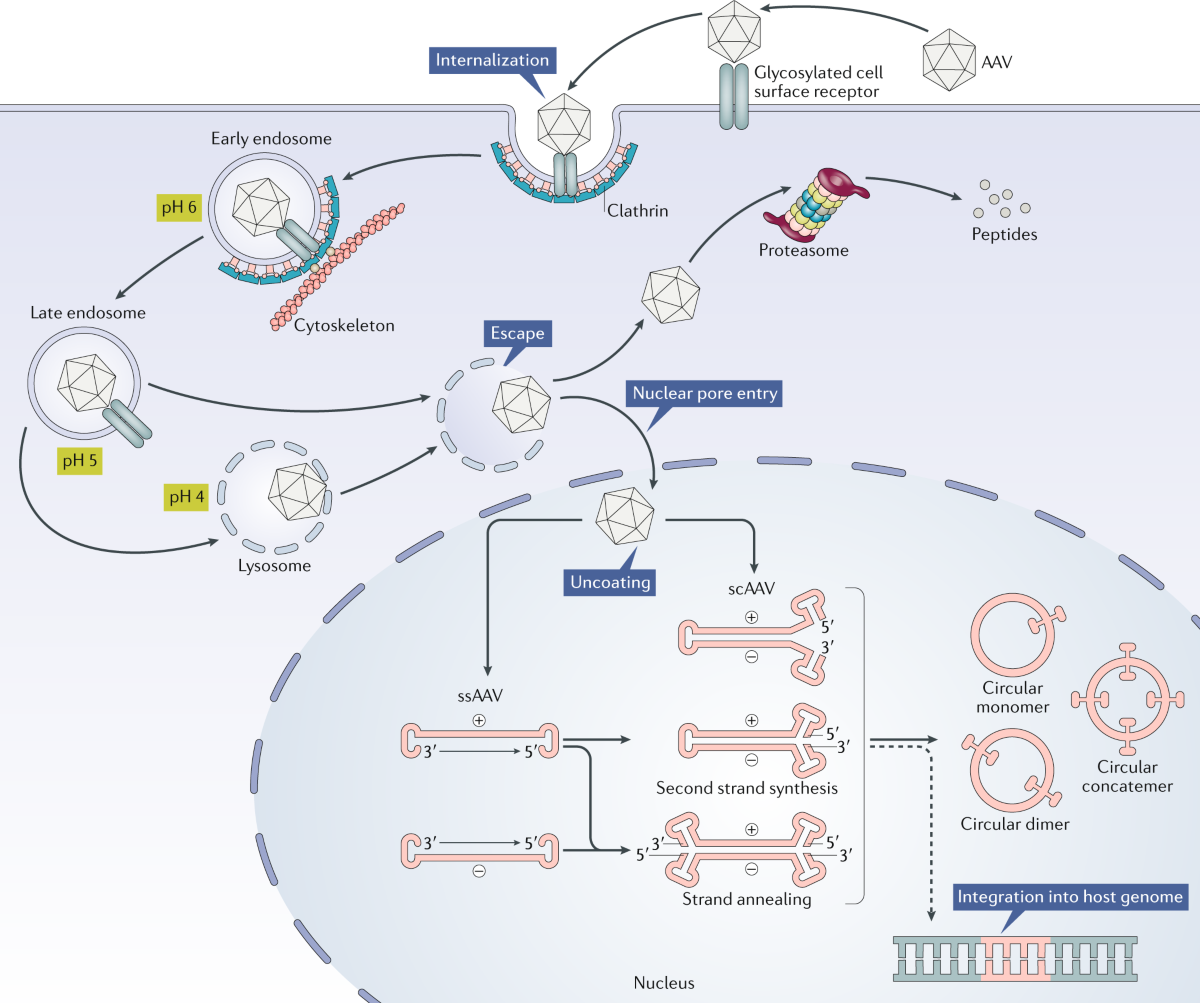
Introduction to AAV Adeno
What is AAV Adeno?
AAV Adeno, short for Adeno-Associated Virus, is a type of small virus that infects humans and some other primate species. Despite its name, AAV is not related to adenoviruses. AAV is a dependovirus and can only replicate in cells that are co-infected with a helper virus such as Adenovirus or Herpes virus. This unique characteristic makes AAV an attractive vector for gene therapy applications.
History and Development of AAV Adeno
The Adeno-Associated Virus was first discovered as a contaminant in Adenovirus preparations in the 1960s. Initially considered a contaminant, further research in the 1980s revealed the potential of AAV as a gene therapy vector due to its ability to infect non-dividing cells and its lack of pathogenicity in humans. Since then, AAV research has significantly progressed, leading to its use in various gene therapy treatments and clinical trials. The development of AAV vectors has provided new avenues for treating genetic disorders, neurodegenerative diseases, and certain types of cancer.
Mechanism of AAV Adeno Transmission
How does AAV Adeno Spread?
AAV Adeno, also known as Adeno-Associated Virus, spreads through various means in the human population. The primary route of AAV transmission is through exposure to contaminated bodily fluids, including blood, saliva, and semen. Additionally, AAV can be transmitted vertically from mother to child during childbirth. It is important to note that while AAV can infect humans and primates, it is not associated with causing disease on its own.
Factors Contributing to AAV Adeno Transmission
Several factors influence the transmission of AAV Adeno. Factors such as the viral load present in the infected individual, the route of exposure, and the immune response of the host play crucial roles in determining the likelihood and efficiency of AAV transmission. Understanding these factors is essential for developing effective preventive measures and treatment strategies for AAV-related conditions. Further research into the mechanisms of AAV transmission is necessary to improve our knowledge and control of this unique virus.
Symptoms and Diagnosis of AAV Adeno
Common Symptoms of AAV Adeno
When individuals are infected with AAV Adeno, they may experience a range of symptoms. These can include flu-like symptoms such as fever, fatigue, and muscle aches. Some individuals may also develop respiratory symptoms like coughing and shortness of breath. In severe cases, AAV Adeno infection can lead to complications affecting the liver or heart. It is important to monitor for these symptoms and seek medical attention if they persist or worsen.
Diagnostic Methods for AAV Adeno
Diagnosing AAV Adeno typically involves a combination of clinical evaluation, laboratory tests, and imaging studies. Blood tests can help detect the presence of AAV Adeno antibodies or viral particles. Additionally, imaging techniques like MRI or ultrasound may be used to assess any organ damage caused by the virus. In some cases, a biopsy may be necessary to confirm an AAV Adeno infection. Early and accurate diagnosis is crucial for initiating timely treatment and managing the effects of AAV Adeno on the body.
Treatment Options for AAV Adeno
When it comes to treating AAV Adeno, there are various options available to help manage the infection and its symptoms. Medical professionals typically consider a combination of medications and therapies to address the effects of AAV Adeno on the body.
Medications and Therapies for AAV Adeno
Medications play a crucial role in treating AAV Adeno. Doctors may prescribe antiviral drugs to help combat the viral infection and reduce its impact on the body. In addition to antivirals, patients may also receive supportive care, such as pain relievers, fever reducers, and cough suppressants, to alleviate the symptoms associated with AAV Adeno. Some individuals may benefit from intravenous fluids or oxygen therapy to support their recovery.
Surgical Interventions for AAV Adeno
In more severe cases of AAV Adeno where complications arise, surgical interventions may be necessary. Surgery can help address organ damage caused by the virus or manage any conditions that develop as a result of the infection. Surgical procedures aimed at treating AAV Adeno are typically conducted by a specialized surgical team to ensure the best possible outcome for the patient. It is important to consult with healthcare providers to determine the most suitable treatment plan based on individual circumstances.
Also Read: AAV Adenovirus: Understanding the Differences
Complications Associated with AAV Adeno
Potential Risks and Complications
When dealing with AAV Adeno, it is essential to be aware of the potential risks and complications that may arise. Patients with AAV Adeno are at risk of developing severe respiratory distress, especially if the infection spreads to the lungs. Additionally, there is a possibility of neurological complications, such as seizures or encephalitis, which can greatly impact the patient’s well-being. In some cases, AAV Adeno can lead to multi-organ failure, requiring immediate medical intervention to prevent further complications.
Long-Term Effects of AAV Adeno
Understanding the long-term effects of AAV Adeno is crucial for both patients and healthcare providers. Individuals who have recovered from AAV Adeno may experience long-lasting effects on their respiratory function, requiring ongoing monitoring and support. Some patients may also face psychological challenges post-infection, such as anxiety or depression. It is important for healthcare professionals to provide comprehensive care that addresses both the physical and emotional aspects of recovery from AAV Adeno. By recognizing and managing these long-term effects, patients can work towards regaining their health and well-being.
